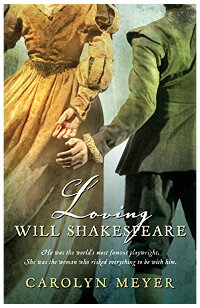Anthony Burgess
London: Vintage, 1964
This highly-fictionalized, slightly seedy pseudo-biography of Shakespeare is presented in a frame story as a bravura exposition of sonnet 147, “My love is as a fever,” etc., by a drunken professor, “Mr. Burgess,” to his Malaysian students. Its most salient feature is the extravagant chaos of its prose, presented as Shakespeare’s own stream of consciousness; the novel is written in an exuberant, head-spinning, sometimes-distracting style, modeled on Joyce’s Ulysses. Burgess uses snippets from Shakespeare’s own plays as well as slang, some historical, some invented, to evoke Elizabethan English. Life in contemporary London is presented in vivid, lavish detail as equal parts chaotic, squalid, and spectacular. Notorious Elizabethan prostitute Lucy Negro is cast as Shakespeare’s East Indian mistress, a former Muslim originally named Fatjmah, and the Dark Lady of his sonnets. She is seduced by Shakespeare’s foppish friend, patron, and occasional lover, the Earl of Southampton, catches syphilis from him, and imparts it to Shakespeare himself. Meanwhile, Shakespeare is cuckolded by his younger brother Richard, who stayed behind in Stratford, as proposed in the “Scylla and Charybdis” episode of Joyce’s Ulysses, and whom Shakespeare discovers here in bed in flagrante with Anne Hathaway.—PG
Read more about the book on goodreads.com









